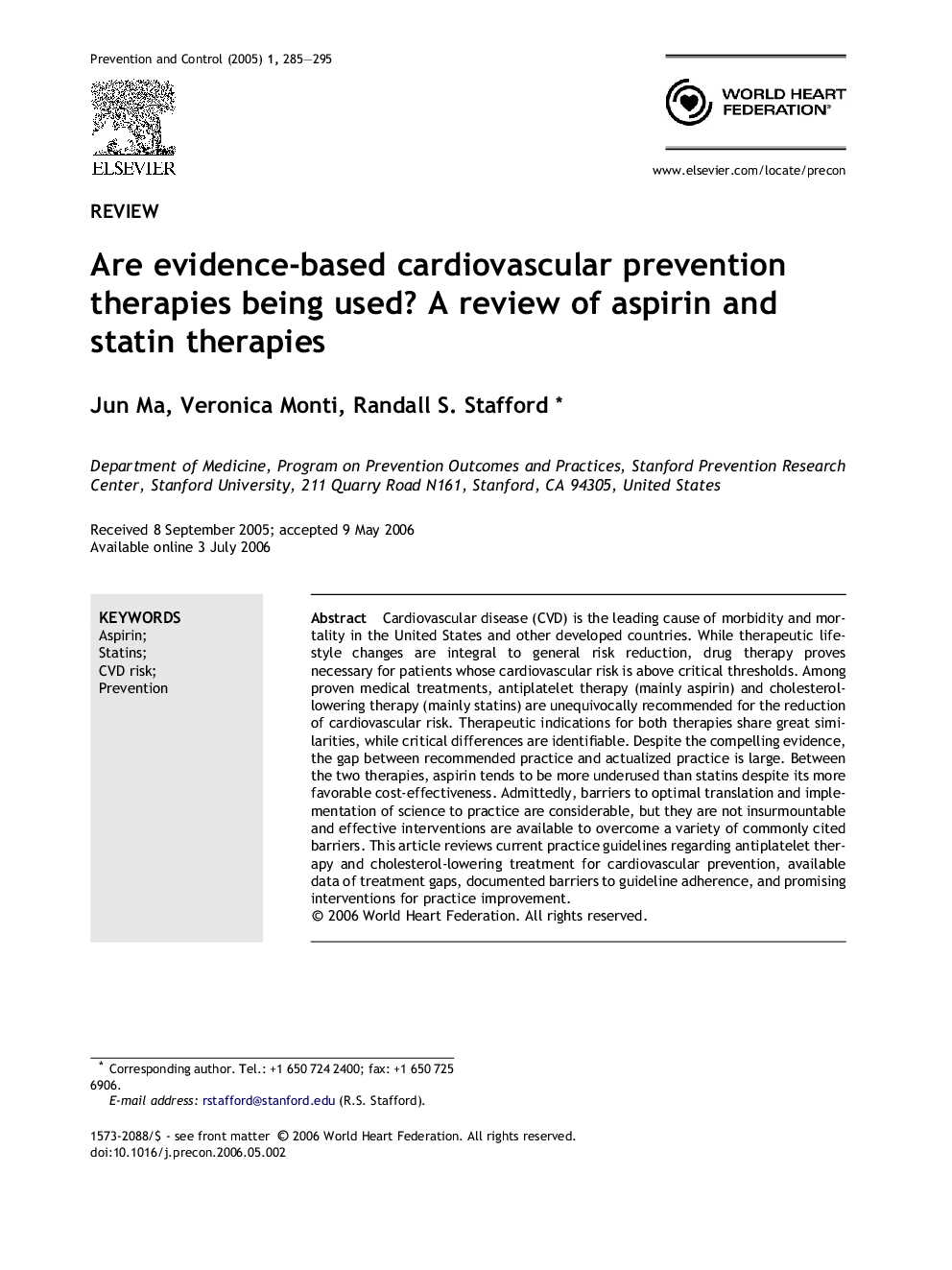| Article ID | Journal | Published Year | Pages | File Type |
|---|---|---|---|---|
| 9178845 | Prevention and Control | 2005 | 11 Pages |
Abstract
Cardiovascular disease (CVD) is the leading cause of morbidity and mortality in the United States and other developed countries. While therapeutic lifestyle changes are integral to general risk reduction, drug therapy proves necessary for patients whose cardiovascular risk is above critical thresholds. Among proven medical treatments, antiplatelet therapy (mainly aspirin) and cholesterol-lowering therapy (mainly statins) are unequivocally recommended for the reduction of cardiovascular risk. Therapeutic indications for both therapies share great similarities, while critical differences are identifiable. Despite the compelling evidence, the gap between recommended practice and actualized practice is large. Between the two therapies, aspirin tends to be more underused than statins despite its more favorable cost-effectiveness. Admittedly, barriers to optimal translation and implementation of science to practice are considerable, but they are not insurmountable and effective interventions are available to overcome a variety of commonly cited barriers. This article reviews current practice guidelines regarding antiplatelet therapy and cholesterol-lowering treatment for cardiovascular prevention, available data of treatment gaps, documented barriers to guideline adherence, and promising interventions for practice improvement.
Keywords
Related Topics
Health Sciences
Medicine and Dentistry
Cardiology and Cardiovascular Medicine
Authors
Jun Ma, Veronica Monti, Randall S. Stafford,
